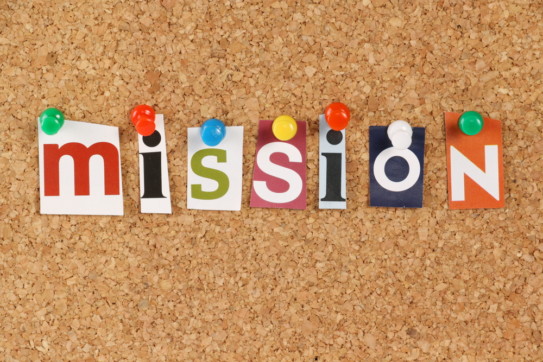Clear Language Matters: Your Nonprofit’s Mission Deserves It

Having worked at the intersection of nonprofits and business for more than 20 years, I have spent ample time (i.e. probably too much) engaged in discussions about missions, visions and strategic planning.
These three things are really important — to both nonprofits and to business. If you add goals to this triumvirate, the four are there to guide organizations every day, every month, every year. They are about both short and long-term vision, orienting activity so teams stay focused on what their boards and CEOs deem important.
Alas, that clarity seems elusive for some organizations. That doesn’t mean that they don’t have missions, visions and plans. What it means is sometimes they spend so much time trying to perfect these statements that they end up losing the exact clarity they seek. The discussion about what words to include, the desire to be complete in describing everything (instead of the core essence) these organizations offer, the often-too-academic debate that ensues…well, all that heads nonprofit leaders down a path that confuses more than clarifies. In the end, after hours and days of offsite meetings and sometimes heated debate, organizations are left with missions that are lofty, wordy, long and hard to understand.
You can say the same about strategic plans. Instead of honing in on the vision of where organizations want to be in 3-5 years and the core set of goals and actions that will actually get them there, they can often become academic, too long, and stuffed full of important — but not meaningful — words. They sit on the proverbial shelf, utlimately wasting all the time that was invested in their creation.
Now to be clear, no one sets out to do a bad job crafting a mission or a strategic plan. Seriously. Nonprofit leaders — both paid and volunteer — seek to do well by their organizations. In doing so, however, many forget the simple truth that using clear language to describe what you do and why is not only important but essential. Every single person who comes into contact with your mission — or the messages and plans and programs you create that bring that mission to life — needs to understand what it means. They need to connect with it. And if you deploy language to describe that core essence that is better suited to a research paper, well, then you’re simply not going to be as effective in connecting with the community (donors, volunteers, potential customers), period.
Ready to do a quick check on your mission to see if you need a redo? Humor me for a minute, and follow the short steps that follow..
- Read your mission. Ask yourself, would your mother, grandmother, or even your child understand it? What about your kid’s baseball coach who has no idea what you do? (If you dare, ask them yourself!)
- Think about how you answer when you talk about your mission. Do you end up saying, “what that means is that we…”? Do you have to add words to help others “get” what the mission didn’t convey?
- Look at the actual, individual words in your mission. Are they clear? Do they explain, at the very heart of things, why your organization exists? Do they convey meaning and emotion?
- Look at how long your mission is. Does it include a lot of extra clauses and phrases to make sure it’s “complete.”
How’d you do? For those of you who passed with flying colors and have a clear, crisp, understandable mission that can be used to then orient the strategic plan, the goals and all the work of your nonprofits — that can serve as a rallying cry — good for you! For those of you who think your mission needs a bit of work, don’t despair. It’s actually a lot easier to get to mission nirvana than you think. Drop the feeling that you have to stuff all your ideas into one sentence, and just begin again. Explain, in the plainest terms possible, why you exist. Those simple words are the beginning. Don’t lose site of them as you work to keep the focus on the core idea they convey. Forget lofty. Embrace clarity. And go out there and change the world.
